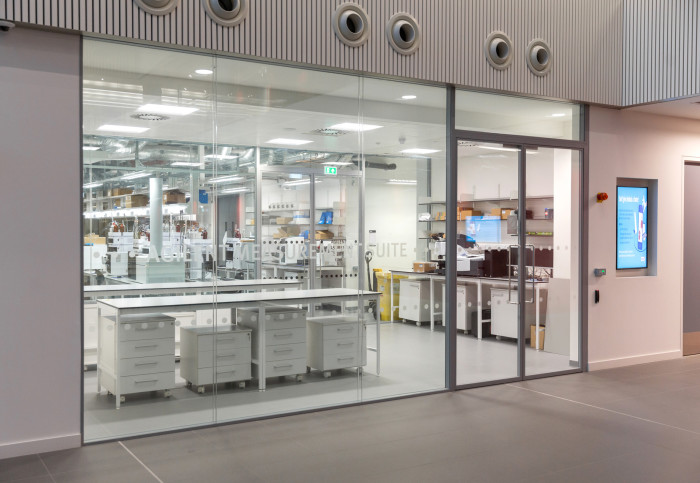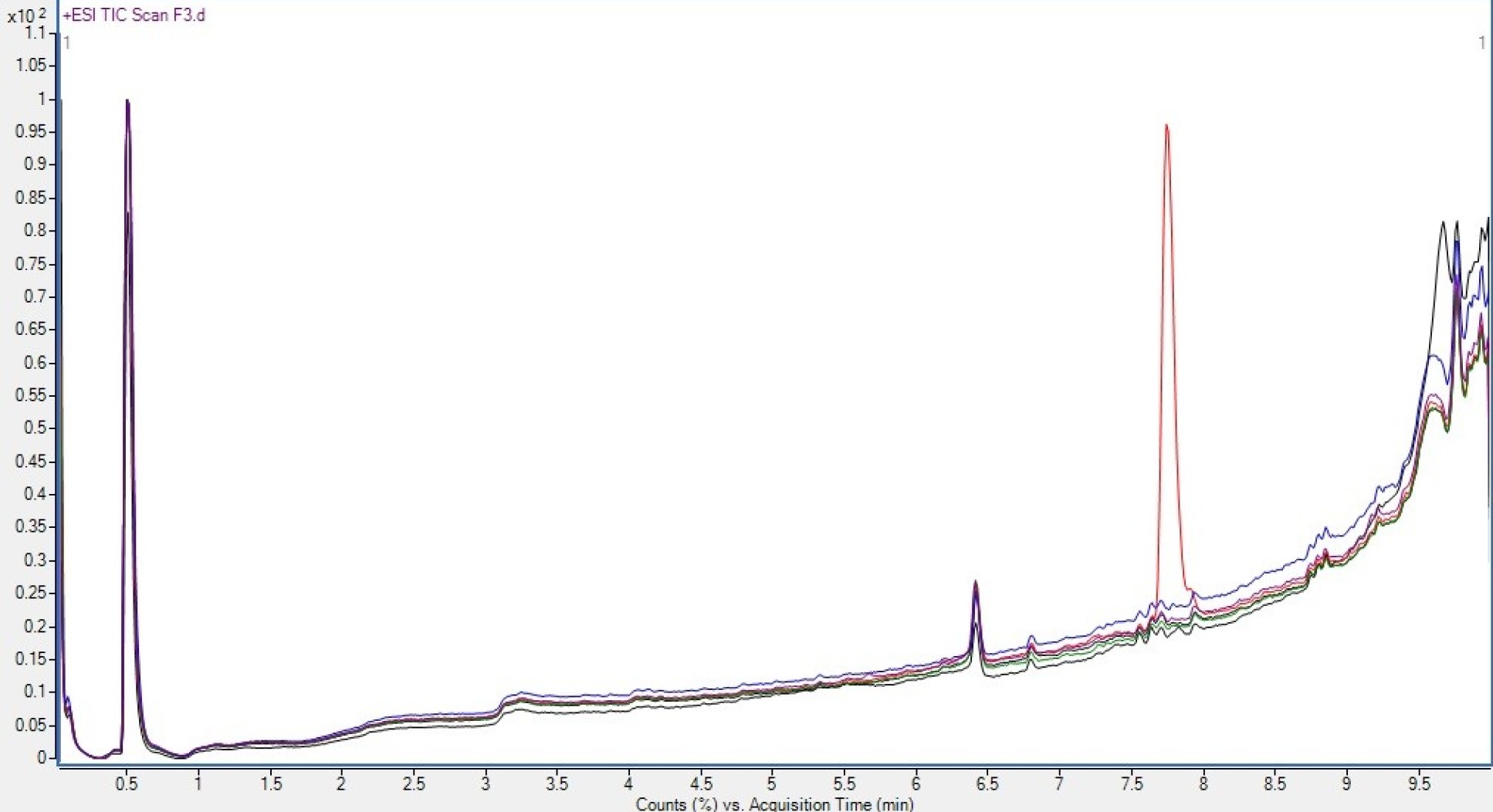

The Agilent Measurement Suite appeared as an expert witness in a recent BBC investigation.
When BBC News wanted to bring some hard science to a story about dangerous tanning products, it called on Professor Tony Cass, director of the Agilent Measurement Suite. Using the highly accurate instruments in the suite, he and his colleagues Dr Trevor Ferris and Dr Rahma Hassan were able to back up the BBC’s story with solid data.
The journalists were investigating tanning products, heavily promoted by social-media influencers, that contained the banned artificial hormone melanotan-2. When inhaled or injected, melanotan-2 accelerates tanning, but also has a number of adverse effects on the body, and has been linked to a heightened risk of skin cancer.
“The journalists asked if we could analyse some of these tanning preparations and tell them if they contained what they claimed to contain, and if there were any other substances present,” Professor Cass recalls. “The tools in Agilent Measurement Suite are well set-up to answer those kinds of question.”
The instrument is very sensitive, able to detect even quite small quantities, and very accurate. Professor Tony Cass Director of the Agilent Measurement Suite
The Agilent Measurement Suite is a 120m2 facility in Imperial’s Molecular Sciences Research Hub, which sits in the White City Innovation District. It contains advanced chemical analysis instruments generously provided by equipment manufacturer Agilent Technologies, or purchased by SynbiCITE, the national centre for the translation of synthetic biology. The instruments include mass spectrometry, chromatography, spectroscopy and cell analysis systems.
In this case, the answers were provided by liquid chromatography-mass spectrometry (LC-MS), a combination of two different analytical techniques. The chromatography separates any complex mixture of compounds into broad fractions, which are then fed into the mass spectrometer, which measures the charge to mass ratio of the substances present.
Measuring a tonne to the last gram
“This is very sensitive, in terms of being able to detect even quite small quantities, and also very accurate in being able to tell you the mass, which is the key parameter in identifying each substance,” Professor Cass explains. “It has a precision of about one part in a million, which is like measuring a tonne with an accuracy of a gram. That level of accuracy is an essential parameter in identifying the molecule.”
For a substance where the mass is known, such as the melanotan in the tanning products, the researchers are looking for a specific peak on the trace coming out of the LC-MS. And to be absolutely certain, they also run a pure, authentic sample through the system for comparison. This is where the work can become tricky. “In a complex mixture, some of the other components can mask the presence of the substance you are looking for, so you have to try different separation conditions and develop a method that takes this into account, to give you good sensitivity along with accurate mass measurements.”
The BBC journalists also wanted to test claims that the tanning products were 99% pure. One look at the LC-MS trace is enough to dismiss that idea. “You can see over 100 other peaks in the separation, so you can say that there are many other components in the sample,” Professor Cass says. “But it’s another matter to say exactly what those components are.”

Their masses and what you know about the original mixture might give you some idea, but without a lot of further work this remains circumstantial evidence. Ultimately, each suggested substance would have to be matched with an authentic sample. “Given the time and cost constraints, we couldn’t do that for all the other components.”
Chemical fingerprints
It would have been interesting to go a little further, however, and use the signature LC-MS trace of each tanning product to investigate its origin. Most come from China, where the melanotan is probably bought in bulk, then reformulated and bottled for sale. “In principle, you could use the signature to identify the source. So, do these different products come from the same laboratory, or are there different laboratories scattered throughout China, each with its own fingerprint.”
If we give our instruments a difficult problem, it challenges us to develop our own expertise and skills. Professor Tony Cass Director of the Agilent Measurement Suite
But the Agilent Measurement Suite had told the BBC team what they wanted to know, and Professor Cass appeared briefly on camera to present the findings. “It was a short part of a short report, but you feel that if you have the information and the opportunity, you should communicate it to the public,” he says. “For us, the project was also a chance to test what the instruments are capable of. If we give them a difficult problem, which this one was in analytical terms, it challenges us to develop our own expertise and skills.”
“This was an exciting project,” adds Dr Hassan. “We expected to find some impurities since the fake tan products were unregulated and bought over the internet, but we didn’t expect there to be as many as 200+ different compounds!”
Working on consumer protection was a new area for the suite, the only comparable work being a study of traditional African herbal remedies suspected of contamination with pharmaceuticals. “We are open to all sorts of challenges, whether they are academic, public interest or commercial,” Professor Cass concludes. “We try to be as open as possible for people to make use of the capabilities that we have.”
The White City Innovation District is a partnership between the College and the London Borough of Hammersmith and Fulham, home to some of the world’s most innovative organisations, spanning life sciences, deep tech, media and the creative arts. Together with the local community, global businesses like Novartis and SAAB are establishing the district as a major economic and cultural hotspot.
Article text (excluding photos or graphics) © Imperial College London.
Photos and graphics subject to third party copyright used with permission or © Imperial College London.
Reporter
Ian Mundell
Enterprise



